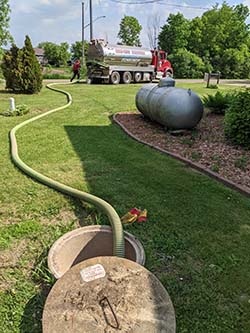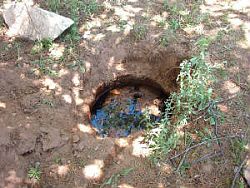What our Clients’ Say
We did not have any knowledge of well and septic systems and your explanation made things easy to understand. Thank you.
— Nancy S.
Our Services Include
- Buyer or seller home inspections
- Well and septic system inspections
- Radon testing
- Water testing
- Mobile home foundation certifications
- Construction draw inspections
Our Company Brochure
Septic Inspections
Identifying the type and performance of the septic system is crucial to preventing health and environmental hazards. Certainly, no one wants to move into their new home and have a sewage backup. The typical time such a problem occurs is when a large gathering overloads a failing system or an improperly installed system.
New or old, proper design and installation is important to maximizing the system's life. Septic system failures can be unsightly, and foul smelling and can threaten your family's health. There’s a risk of contaminating your well water, resulting in costly repairs or system replacement. A septic system inspection may be required by lenders when you buy, sell or refinance your home. So, ignoring a septic system inspection could cost you money in the long term!
  |
 |
| Newer Septic System Inspection | Bad Septic System |
What type of Septic System (also referred to as POWTS or private onsite wastewater treatment system) do you have?
The most common types of septic systems in order, in Northwest Wisconsin are:
1) Conventional: This system works on gravity, there are no pumps, typically 1 septic tank and 1 drain cell (drain field, drainage field). There may be additional tanks or cells due to upgrades.
2) Conventional with non pressurized dosing: Similar to conventional but has a pump system (also referred to as a pump tank, lift tank, dosing tank) after the septic tank and before the drain cell typically to lift (pump) the wastewater up to the drain cell.
3) Mound or at grade pressurized dosing: Due to soil conditions, ground water, or bedrock near grade a drain cell has to be constructed at or above grade to accept and treat wastewater. Waste water is forced into smaller perforated pipes in the cell to insure that the whole cell is used for treatment.
4) Holding Tank: Not necessarily a POWTS, as it is a container that once is filled it has to be emptied and the wastewater has to be treated elsewhere.
5) Aerobic Treatment Units (ATU): Least common this system has a Aerobic treatment tank in between the septic and and the drain cell.
Reference Material
- Septic Care and Maintenance
- At-Grade Septic System Inspection
- Conventional In Ground Septic System Inspection
- Holding Tank Inspection
- In-Ground Pressure Distribution System
- Aerobic Treatment Unit (ATU) Inspection
- Septic System Mound
We serve Rice Lake, Eau Claire, Chippewa Falls, Hayward, Spooner, Bloomer, Ladysmith, Cumberland, Menomonie and Cable






